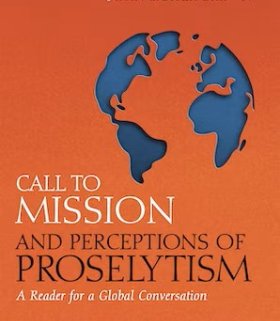This book is a very welcome contribution to the conversations between different Christian expressions about proselytism. It deals not only with Evangelical-Orthodox experiences and understanding of proselytism, but also the Catholic Church's interaction with both Evangelical and Orthodox expressions. For this reason it is a particularly helpful volume, giving real insight into the complex issues that have faced these groups historically, and the contemporary forms.
The book is divided into three sections:
- Part 1: Setting the Scene: three broad articles laying down themes and issues by John Baxter-Brown, Cecil Stalnaker, and David Kerr.
- Part 2: Statements and Reports from Christian Bodies: nineteen sets of documents from diverse Christian bodies with their statements and reflections on proselytism, these include: The Second Vatican Council, various documents prepared my the WCC, Middle East Council fo Churches, Pentecostal bodies, WEA, Lausanne Movement, and others
- Part 3: Articles by Individual Commentators: a set of seven important and previously published articles by leading shcolars; Miroslav Volf, David Kerr, Cecil M Robeck, Joel Nichols, Darrel Jackson, Elmer Thiessen, Thomas Shirrmacher, Petros Vassiliadis
It is welcome for several reasons:
- Part 1 lays down the issues and themes very clearly exploring legal, political, theological and missiological concerns from important perspectives, defining terms clearly, and pointing clearly to an urgent need for clarity
- Part 2 is a comprehensive collection of statements and reports from Christian bodies. The comprehensive, and people new to the challenges of proselytism will be well informed through studying the hard work done in many contexts on the issue of mission and proselytism. The wide reaching statements reflect diversity in Christian expression but also in geography, giving significant opportunity for readers to find information of broad interest, but also information that is specific to their location.
- Part 3 contains articles dating back to the 1990s, but their content is enduring, especially those that address the conflicts caused by the enhanced missionary effort in Eastern Europe following the fall of the Soviet Empire in 1991. Situations which have developed but have the same basic challenge of Evangelical mission encountering established churches, and in Eastern Europe especially the Orthodox Churches. Some of these articles may be familiar to those well read in the field: Miroslav Volf’s article from the International Bulletin of Missionary Research 20.1 (1996), for instance, but it is well read and presented with the other articles in the volume it makes an important contribution to the understanding of encounters between Orthodox and Evangelicals in Eastern Europe.
- Some of the articles will be less familiar, and notable here is the contribution from Joel Nichols from the Emory International Law Review 12 (1998). This article is an edited version of a much longer MDiv dissertation, and drawing much as it does from legal perspectives may be less familiar to missiologists. It is a commendable analysis of the interaction between theological and legal issues in the complex understanding of proselytism. Returning to a theme in the first section, it emphasises how unclear some of the documents produced by the diverse bodies are on crucial matters: what are nominal Christians, missionary lands, and appropriate methods of evangelism? This article provides a stimulating companion to Part 2.
The book is presented as a reader, and it meets that need very well. It will expose those reading it to diverse perspectives, and will
challenge any perspective that does not look broadly at what the Church is, and how different understandings continue to produce misunderstanding, and conflict.
It is a resource, I feel, that should be compulsory reading for any Evangelical thinking about or engaging in mission in a place where Orthodox Christianity has a strong heritage – it may make uncomfortable reading for some, but that should be understood as a positive matter – since reflecting on the ideas expressed in this book will only enhance and develop a nuanced understanding in a specific context. For Orthodox readers, it will challenge those who may be inclined to dismiss Evangelical expressions as somehow just an expression of Enlightenment
individualism, and will perhaps help to see opportunities for building a vision of mission that moves away from those that have generation unnecessary tension in the past.
Finally, although the issue may not be addressed in detail, it would give a helpful perspective for those in established churches in the west who encounter, through migration, the diverse ancient expressions of Christianity that are perhaps unfamiliar. Christians from Iraq, Syria, and other parts of the Middle East have made their home in western Europe recently – in earlier decades Serbian migrants have brought their Orthodox expression to the west, and even before them Russians fleeing the persecution of Communism. These groups have been displaced, but their vibrant expressions of Christianity have come with them, and there will be a growing need for warm and cooperative relationships between these churches and those in the places that they have found their new homes in. There is, perhaps, a chapter to be written on these encounters, but the documents and articles in this book will help those seeking to make these encounters positive, and ones which contribute to the mission of God in the world.
Ralph Lee, LOI Facilitator
